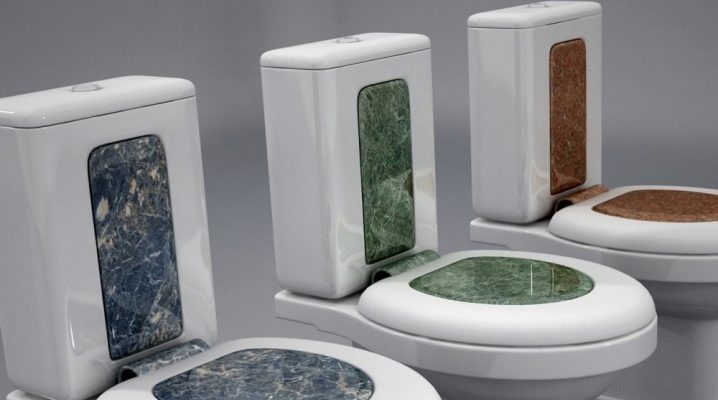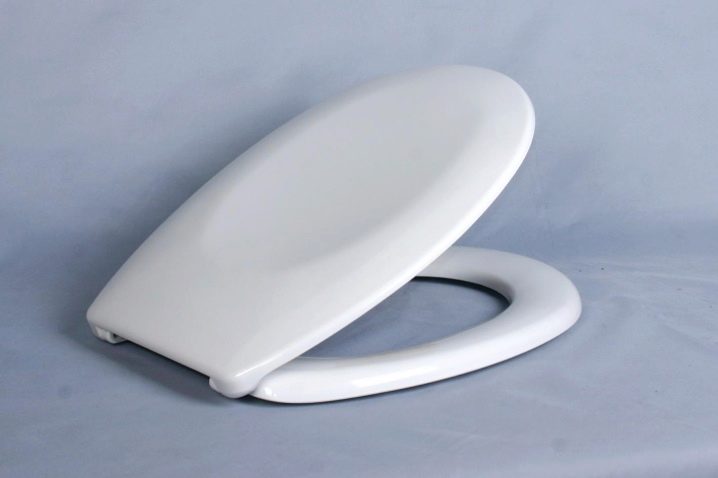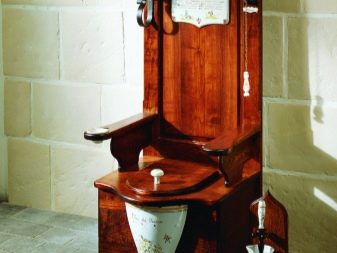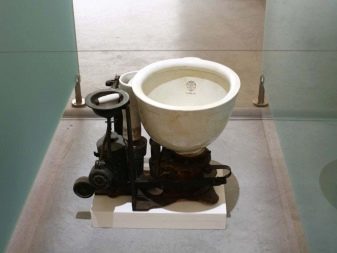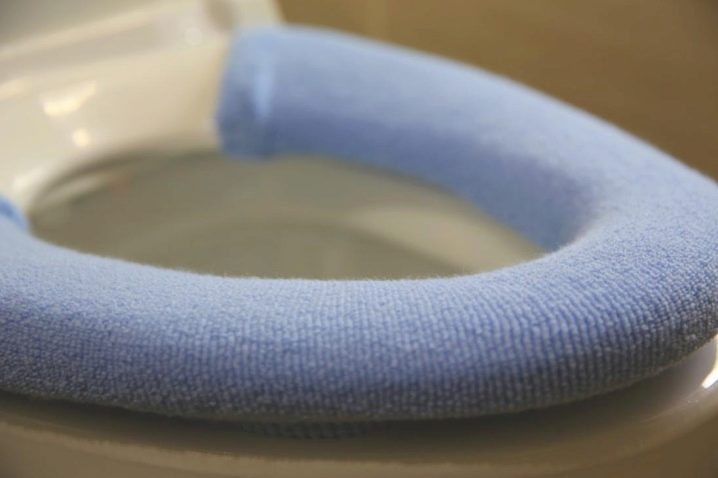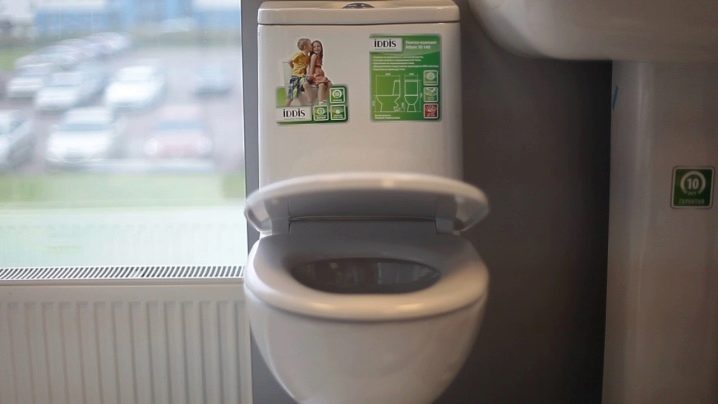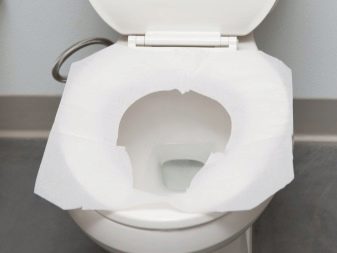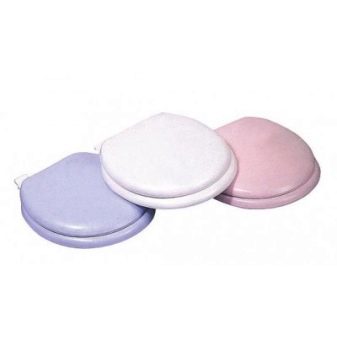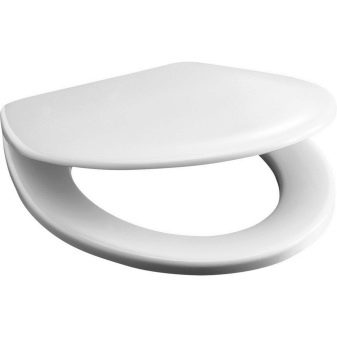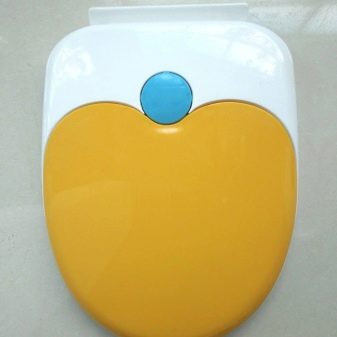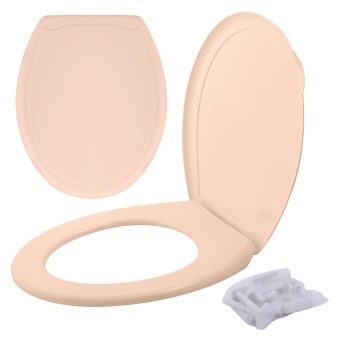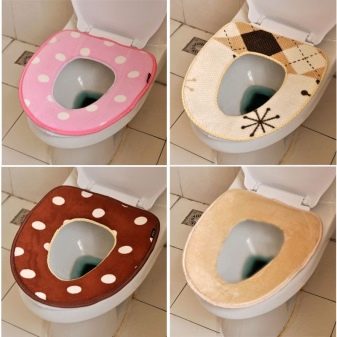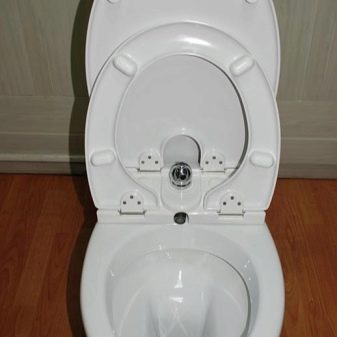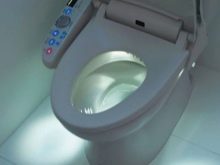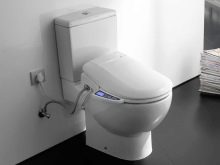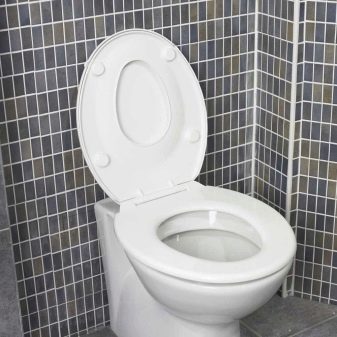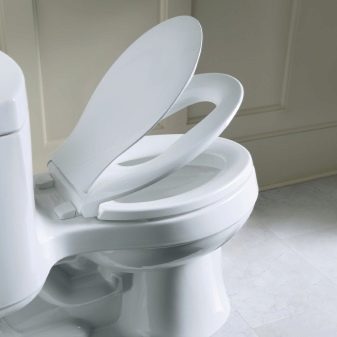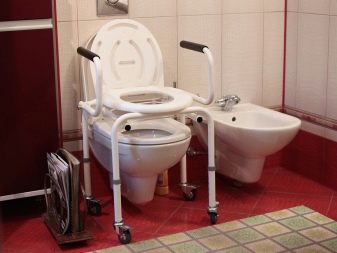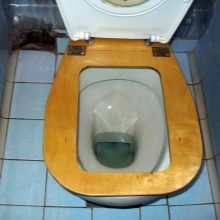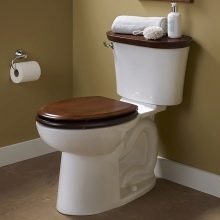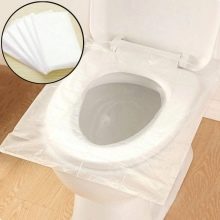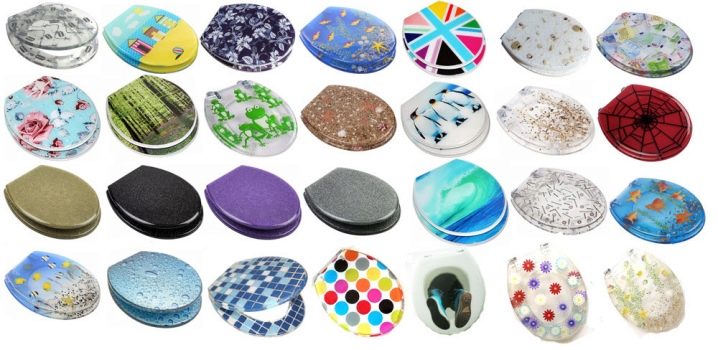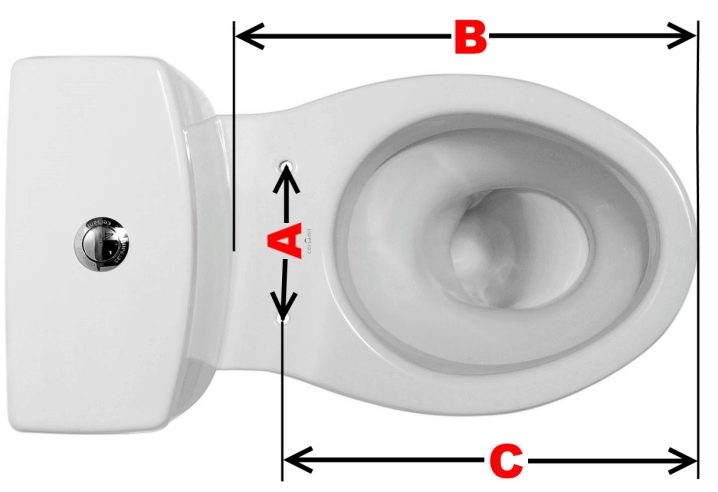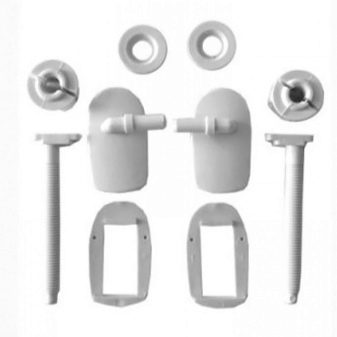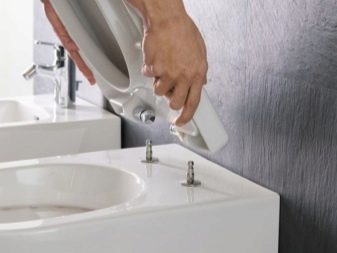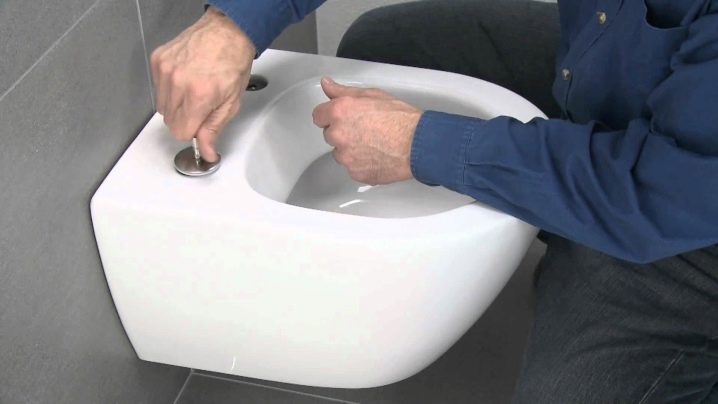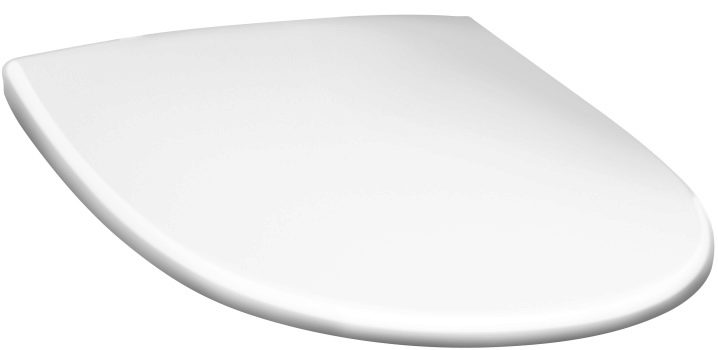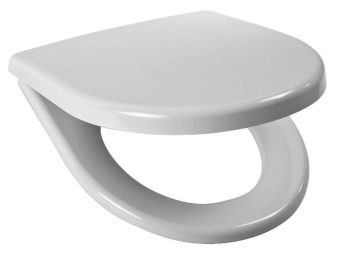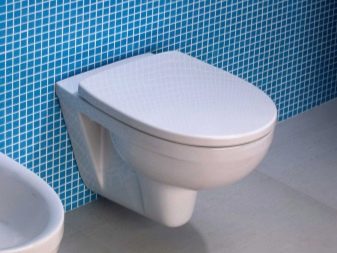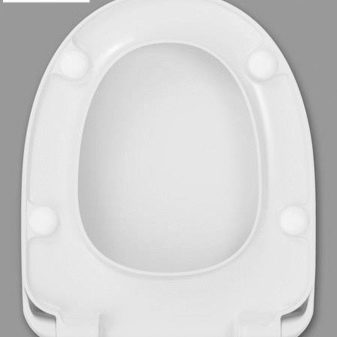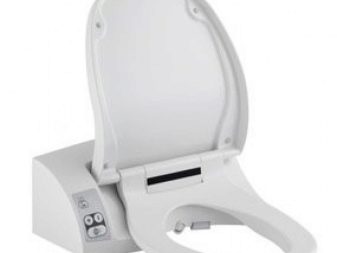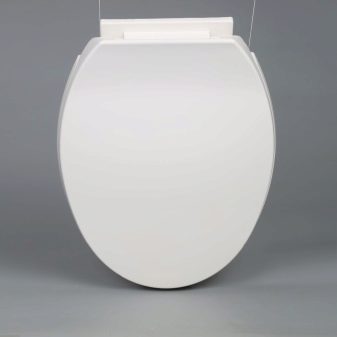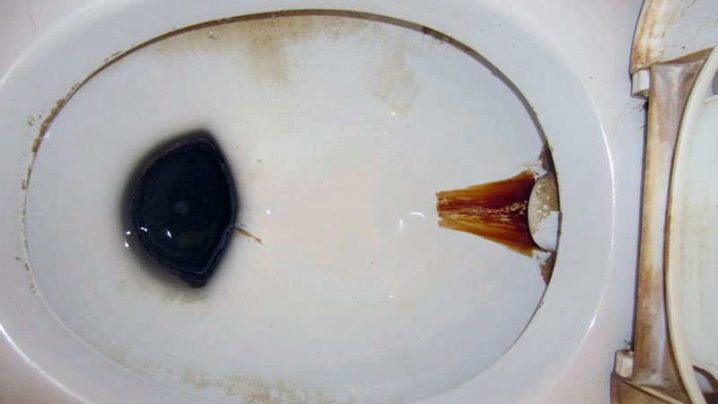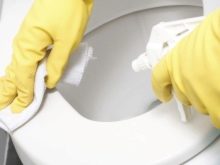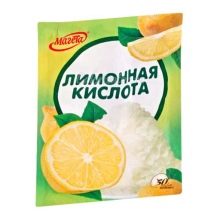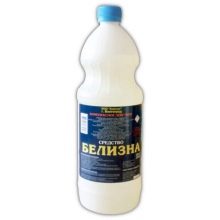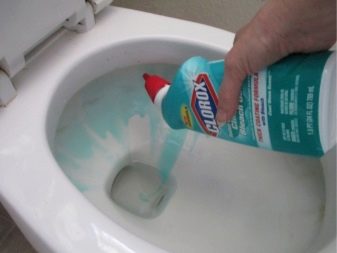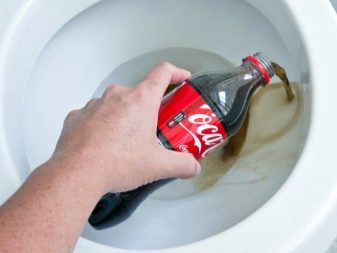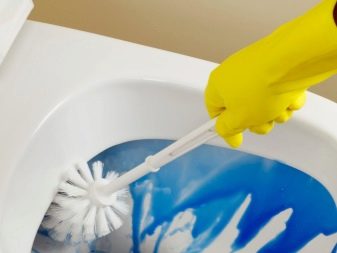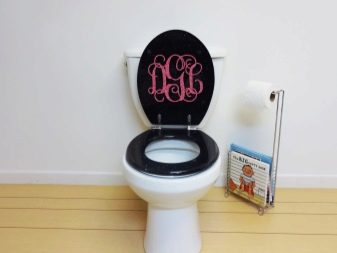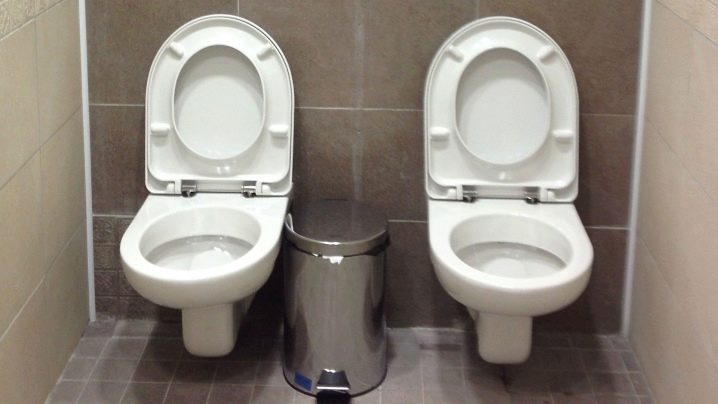How to choose a toilet seat?
In the XXI century, few people can be surprised by something. Technical progress is taking leaps and bounds and some things have become so mundane for us that we don’t even think about who invented them and when. One of these things is the beloved and widely used toilet.
The history of the toilet
The history of this remarkable device begins three thousand years BC in Mesopotamia. And also around the same time, a whole sewage system was found in Mohenjo-Daro, with wooden seats and sewage drains. The British Museum holds a very valuable exhibit - a device made in the form of a throne that served as the “night vase” of the Sumerian queen Shubad. This find dates back to 2600 BC.Ancient China, Rome, Egypt also had sewage systems, very sophisticated, considering how long ago it all happened.
However, medieval Europe was not pleased with its technical progress due to the lack of such. There, even the nobility coped with the need for ordinary pots, and their contents, after spilling out of the windows onto the street! The first device with a sink was invented for Queen Elizabeth the First in 1596. Its author was John Harrington. The design was carefully described and documented, but did not receive mass distribution not so much because of the high cost, but because of the lack of a water supply system in the English kingdom.
The flush toilet was invented almost two centuries later, in 1738. And in 1778 the first toilet seat appeared - a folding seat with a lid. Mass production of toilet bowls was started in 1909 in Spain. This took a company called Unitas. Hence the name of these wonderful subject, without which we now do not represent our life.
At first, the model range was very small. Now you can contemplate a huge variety of toilet bowls of all colors, in any price category and with various additional functions. People often choose a toilet bowl responsibly.Someone looks cheaper models, others, on the contrary, give an exclusive model "with the bells and whistles." However, when it comes to choosing a toilet seat, shoppers take the first model that fits, in shape and size, and leave. But this is wrong, because the choice of the seat is no less important than the choice of the toilet itself.
Special features
A toilet seat or as it is also called a toilet seat is not an easy part of a “white friend.” It is on how it will depend on the comfort of staying in the "rest room". Now on the market there are a lot of models of toilet seats, differing from each other in shape, size, color, materials of manufacture, as well as the presence or absence of options.
Kinds
Regardless of how exactly a toilet seat looks like, it somehow falls into one of several categories.
- Disposable pads. Most often they are used in places of common visits: in hotels, restaurants, cinemas. Their main purpose is to ensure safe visits to the public toilet without the risk of being infected with any dangerous disease. Of course, such seat mats have a very limited shelf life, as a rule, they are disposable. Make them from polymeric materials, but most often from paper.
Such a toilet seat does not have fasteners and this is both an advantage and a disadvantage. Plus is that its installation and preparation for operation will take no more than a minute; the disadvantage is that it can slide along the surface of the toilet bowl and be not too comfortable to sit on it.
- Plastic seats. If you want to buy the most simple and durable stool, you should opt for a plastic product. Its service life will be at least 3 years. It should be ensured that the plastic from which the toilet is made is rigid, has sufficient thickness. As for the variety of forms, there is nothing to boast of plastic products here: as a rule, they are only universal, oval, without additional functions and decorations. But this is not a disadvantage, on the contrary, often due to its simplicity, such sidushki are the most convenient.
But they still have minuses, and, more precisely, one minus - these are elements of fasteners. Most often, they are also made of plastic, and therefore quite easily broken. Now on the market there are plastic models with metal fasteners, so they are recommended to purchase.
- Soft seating. Not the best option, because despite the apparent ease of use, such products are rather fragile and their service life is no more than six months. As they wear out, soft seat mats lose their presentation and spoil the impression of the toilet room design. Of course, they are very affordable in price, but this is exactly the case when the "miser pays twice."
- Stool with integrated bidet. One of the new-fangled "frills" that emerged in the XXI century, was the emergence of toilet seats with a bidet function. In such a toilet seat is mounted a small fountain for hygienic procedures. Many models have the option of heating the water for more comfortable use. However, do not forget that comfort costs money, so you have to spend money on such pleasure.
- Sitting with lifter. This interesting device is designed to automatically lower the toilet lid. Such models have a solid construction, high service life (from three years), of course, and their price is considerable. Some of them have the function of disabling the microlift to allow the user to mechanically close the cover.
- Heated stool. The warm seat is designed to provide the most comfortable conditions of stay in the "rest room". Most often, this option is present in expensive models, although there are budget plastic variations.
- Electronic seat. Appeared not so long ago, but has already won a huge audience of buyers. The essence of this "smart" seat is the recognition of the approach of a person and the activation of the mechanism for lifting the lid. When the visitor leaves the toilet, the lid closes automatically.
Electronic seat has not only this function. Most often it contains a whole set of options, such as a bidet, heated seat mats, air deodorization and even an integrated hair dryer! Of course, there is a great temptation to acquire such an equipped toilet seat, but it is worthwhile to correlate the expediency of this acquisition with its price and its financial capabilities. If they match, it will be great.
- Double family seat. In families where, in addition to adults, there are small children, the issue of the comfort of the toilet seat for all members of the family is highly relevant. In this case, you should focus on purchasing a dual device.It looks like this: two seat mats (large and small) are fastened together, one overlaps the other, and the small one is always on top. On such a seat will be comfortable for both adults and children. As young members of the family get older, the small attachment can be removed.
- Seats with options for the disabled, the elderly and persons with limited mobility. This is truly a great invention to help those who are temporarily or permanently experiencing difficulties in carrying out personal hygiene procedures. On the market there are orthopedic structures with folding armrests. And also there are models with the possibility of lifting the seat mats up to 20 centimeters higher than is usually required.
Materials
Toilet seats are made from a large number of materials. Among them are fabric, and plywood, and natural wood, as well as plastic and duroplast.
Their advantages and disadvantages should be considered in more detail.
- The most popular were plastic seat mats. This is due to the almost optimal price-quality ratio. However, if, in addition to low cost and long service life, as well as a presentable appearance,You should pay attention to products made from other materials, since plastic seats do not differ in beauty, may turn yellow with time and there is a danger of scratching them when washing.
- Duroplastic toilet seat is more attractive in terms of both aesthetics and hygiene. The composition of duroplast includes a special component that prevents the appearance and reproduction of harmful microorganisms. And in appearance, such a toilet seat resembles a ceramic one.
- The most unfortunate and unpopular material used to make toilet seats is plywood. Of course, its price is low, but it looks cheap. In addition, its porous structure is ideal for the reproduction of bacteria.
- The most beautiful and presentable are wooden products. They are not too popular because of their relatively high cost. However, their quality is also “luxury”, the service life is estimated in years. But even such ideal seat mats have a minus: they are very massive and with an inaccurate lowering of the lid the toilet can crack. Therefore, it is often wooden models that are equipped with a microlift.
- Paper disposable products are usually found in public places, as mentioned above. The fabric, as a rule, is used not as the main material for the manufacture of the seat, but as a decor. For example, for sewing a removable cover on the toilet lid.
Color solutions
If the toilet room has a certain style decision, then it makes sense to think about a more picky choice of toilet seat, since it can become a “cherry on the cake” at the completion of the bathroom repair. Of course, no one has canceled the classic white color, but with the advent of colored toilet bowls — yellow, black, red — and the covers for them began to produce bright, multi-colored. There are even models with a pattern - butterflies, flowers, patterns. And the kids will appreciate the cover with cars or funny little animals.
Even if the toilet does not have any special requirements for the colors of the toilet seat, this does not mean that you should opt for the classic white model. You can choose a cover under a tree or marble, but even just a color, but monophonic, suitable to the shade of a tile or rug.
Dimensions
You should not go to the store without exactly the measured parameters, which should correspond to the toilet seat for a particular toilet.
It is necessary to measure the following:
- the width of the toilet.It is measured in the widest place;
- the gap between the holes for the mounting bolts with which the cover is screwed. This value is measured from the center of one hole to the center of another. An error of a few millimeters is allowed;
- the distance from the edge of the seat to the beam passing through the centers of the mounting holes. This parameter is measured by tracing an imaginary line through the centers of the holes. The perpendicular from the edge of the cover is drawn to this line.
Accessories
Not the last role in the long-term operation of the toilet seat is played by its fasteners. As a rule, they are made of plastic or metal. When choosing fasteners, you should take into account the features of a particular model of the toilet, as fasteners are not universal.
A variety of covers, presented on the modern market of plumbing, gave rise to the variability of their mounting. There are both the simplest mechanisms (quick-detachable plastic toilet seats on two bolts) and such that it is quite difficult to install and remove by yourself (electronic “smart” seats, with microlift and sensors that detect movement and presence).
Dismantling the conventional cover includes the following steps:
- lift the lid (seat down);
- unscrew the bolt fastener in the lower left corner;
- unscrew the same bolt on the right;
- remove the entire seat.
Installing such a toilet seat is done in reverse order.
There are two types of fasteners: with washers and without them. In the absence of such, but to preserve the reliability of fastening, produce nuts with an edge on the end in the form of a washer. The most reliable is a combination of a bolt made of metal and a nut made of nylon material, which provides the best hitch.
Now let's talk about how the cover is attached to the toilet seat. As a rule, it is a hinged structure, the fastening elements in which are sleeves made of metal, plastic or metal-plastic. Plastic joints are most often found in low-cost models. Metal, as stronger, are used in the production of "smart" products, equipped with various mechanisms. Plastic fasteners are a huge plus in their resistance to rust, which is not the case with metal fittings. But plastic is fragile and can break when misused, and metal hinge mechanisms are more durable.
If one of the seat components fails, in most cases it is sufficient to simply dismantle it and replace the damaged part with a new one. But, in a situation with a breakdown in a more “tricked” design, a more detailed study of the problem and, possibly, a specialist call, as repairing a microlift, for example, is not so easy without the appropriate knowledge and skills.
Brand Overview
Consumer demand appears - the market responds by the appearance of proposals. As soon as the toilet seat ceased to be just its minor detail, and turned into an opportunity to make the stay in the bathroom more comfortable, the plumbing and component manufacturers immediately responded properly. Today there are several brands that have received the best feedback from consumers.
- Gustavsberg. Toilets and components of this company are a sample of truly Swedish quality. Among the models there are both simple products and more modern ones equipped with a microlift. All seats are equipped with metal chrome fasteners. Gustavsberg cares about its customers and provides a mandatory guarantee for its products.By the way, this is one of the few companies whose product line includes wood-based seat mats: oak, ash, teak.
- Jika. This company appeared in the Czech Republic in the XIX century. From its inception to the present day, this company has not tired of improving technologies and introducing innovations, which allows us to produce high-quality and environmentally friendly products. The following Jika toilet models are on the market now: Lyra, Vega, Zeta, Baltik, Era. To any of them you can pick up a plastic seat, both classic and equipped with a lifting mechanism.
- Ifo. Another producer from Sweden that deserves attention. It makes heavy-duty models of the seats of luxury plastic. The choice presented as a classic options, and with this option, as a microlift.
- Haro. This German company produces plumbing and accessories, combining in them an aesthetic appearance with comfortable use and functionality. There are many colors and style decisions to choose from. Haro is also a supplier to many healthcare organizations due to its unique design - antibacterial coating.
- Iddis Duroplastic products from this company are among the most "long-playing" in the market of components for toilet bowls. Duroplast is not prone to yellowing, resistant to cracks and scratches, prevents the appearance and reproduction of harmful microorganisms. Due to its properties, Iddis Seats have a long service life, while maintaining an attractive appearance. The covers of the Iddis models are equipped with a lifting mechanism.
Subtleties of choice
When choosing a toilet seat, you should ensure that it meets the following requirements:
- safety in use;
- comfort;
- high strength manufacturing material;
- quite long service life;
- esthetic and attractive appearance;
- perfectly suited to the selected model of the toilet;
- required set of functions;
- did not enter into a dissonance with the design of the bathroom.
The stool is usually oval-shaped. But this rule does not apply to the cover! It can be both square and rectangular; may have an outline of an animal or a violin. On the cover can be applied to any ornament, photograph or drawing illustration.And also it can be decorated with decorative elements like beads or rhinestone.
Operation and care
Regardless of the price and the stated quality of the toilet he needs a much more thorough and frequent care than any other plumber. Waste of the human body leaves very unpleasant traces on the toilet itself and on its seat.
Particularly affected by the toilet from the so-called urinary stone. The fact is that urine in its composition has special minerals that can settle on the walls and under the rim of the toilet, and eventually harden, forming the same stone. If you do not periodically get rid of him, he will take a lot of trouble when cleaning. Therefore, when carrying out cleaning procedures for the toilet and its components, one of the most important requirements is their regularity. Only in this case, the toilet will always be clean and will not need additional manipulation.
Rules of daily care:
- after each visit to the toilet room it is necessary to flush the toilet by draining the water from the tank;
- wipe toilet seat toilet paper or napkins in contact with him drops of physiological fluids;
- once every 3-4 days to handle the surface of the toilet with special means in order to avoid the formation of plaque;
- A good prophylactic are lozenges or cassettes, fixed under the rim of the toilet bowl. Each time a flush occurs, particles of the disinfectant that makes up these tapes will fall into the water; Thus, the prevention of the reproduction of pathogenic bacteria and the appearance of plaque will be carried out.
To remove minor impurities, you can use several tools.
- Table vinegar. To prepare a detergent based on it, you need to take a saucepan and heat about 1 cup of vinegar in it to a temperature slightly above room temperature. Next, you should pour it into the toilet and add 2 tsp. To the same place. baking soda. Leave overnight. In the morning you need to clean the toilet with a brush and rinse.
- If the lid is slightly yellowed, it is necessary to mix the heated vinegar with soda to obtain a pasty mass. You must wear gloves to protect your hands and apply this mixture with a sponge on the lid and toilet seat. Leave for 15 minutes and rinse with clean water.
- With fine pollution also perfectly copes another very cheap and affordable tool - citric acid. In order to use it to clean the toilet, do not even need any tricks - just pour two bags of acid into the toilet and leave for a few hours. After that, "walk" on the toilet brush and drain the water.
To remove the old plaque will help effective methods.
- Of course, first of all it is recommended to use household chemicals specifically designed for this purpose. But here you should be attentive! Most of them contain a lower concentration of substances responsible for the removal of plaque in order to increase safety of use; therefore, they will not cope with very strong, old pollution. It is necessary to find such means, the use of which is possible only together with a protective mask-respirator and rubber gloves due to the high content of the active substance.
- No matter how strange it may sound, Coca Cola will help to cope with the stale touch! You should pour a bottle of this pop into the toilet, wait a while (4-5 hours will be enough), then wipe the toilet with a sponge or brush and rinse. Pollution will disappear.
- Oxalic acid.Externally, it looks like a powder of small crystal-like particles. When using this substance to clean the toilet bowl, wear rubber gloves. It should be carefully applied to the lid with a wet sponge to prevent splashing into the eyes and on the skin. It is also worth pouring the powder on the bottom of the toilet bowl so that it can dissolve and remove all existing contamination. Like other similar means, the time of its exposure is from 3 to 5 hours.
- When all of the above substances are powerless in front of a very old and dense bloom, “heavy artillery” in the form of electrolyte comes to the rescue. It is the most powerful, but also the most dangerous tool for cleaning the toilet bowl. The main danger that it carries to others is its toxic fumes. Therefore, you should try to protect yourself as much as possible - wear a rubber mask-respirator, goggles, gloves made of thick rubber, as well as clothing that covers the whole body. It is necessary to pour electrolyte into the toilet. Its exposure time is only 15 minutes. Thoroughly rinse it off and air the toilet room.
- "White". This tool is familiar to many.It used to be used for bleaching fabrics, although it caused them great harm. Now clothes, bed linen, towels and other things are whitened with more gentle means, but "Whiteness" has not gone into oblivion, it just changed the scope of application. It is necessary to pour it into the toilet, after 4-5 hours to wash it. The toilet shine pristine cleanliness.
To clean the toilet seat from yellowness, will help several proven methods.
- For starters, it is best to remove the toilet seat and dunk it, so it will be easier to clean it. If self-removal is problematic, you just need to lift it and apply detergent with a sponge on both sides, then wait a few hours and thoroughly wash the seat with clean water.
The list of remedies for getting rid of the yellow bloom of the lid includes bleaching powder or products containing it, a hair clarifier, a mixture of laundry detergent, baking soda and water, “Whiteness”. All these tools are quite effective. They will help to remove the unpleasant yellowness. However, if the contamination was so great that it was not possible to completely remove it, then the correct solution would be to replace the seat and the lid in order to preserve the aesthetics of the appearance and hygiene.
The toilet seat is an important element that guarantees not only convenience and comfort during use, but also gives the toilet attractiveness and beauty. Among the huge range of models from various manufacturers, you can choose the option for every taste. A wide palette of colors, shapes and sizes, as well as materials provides a wide selection of stylish, reliable and practical models.
How to choose a toilet seat, see the following video.
